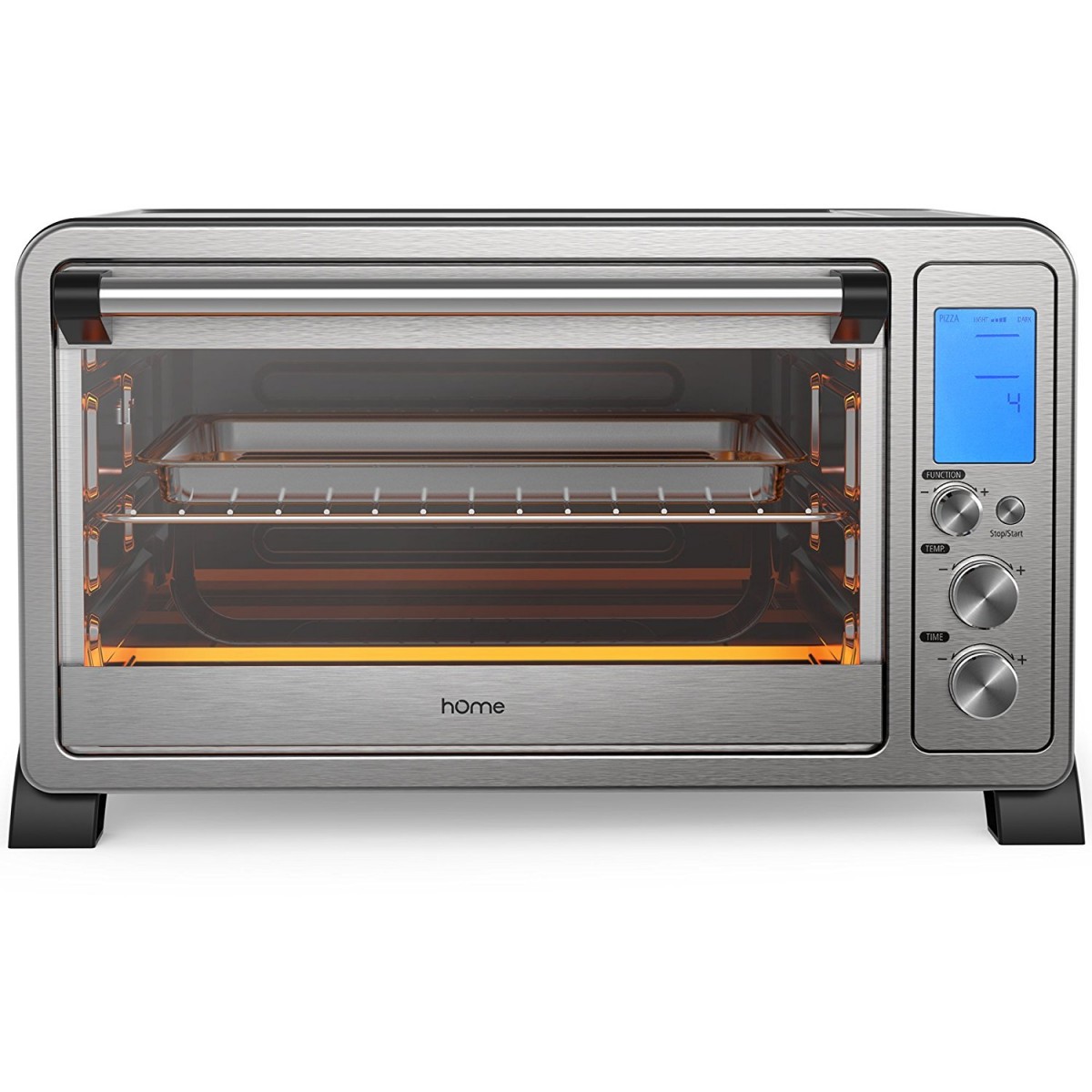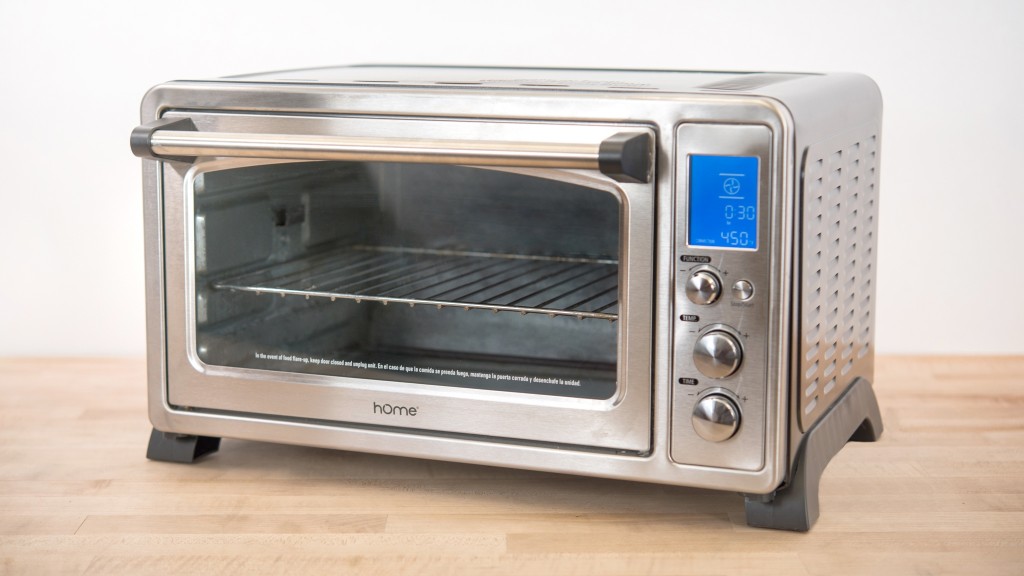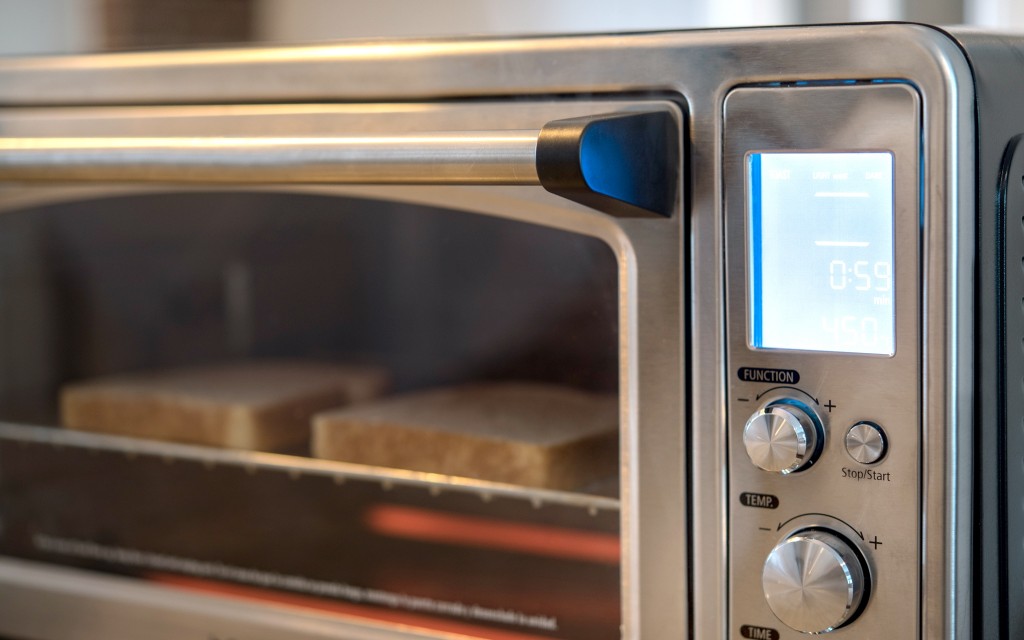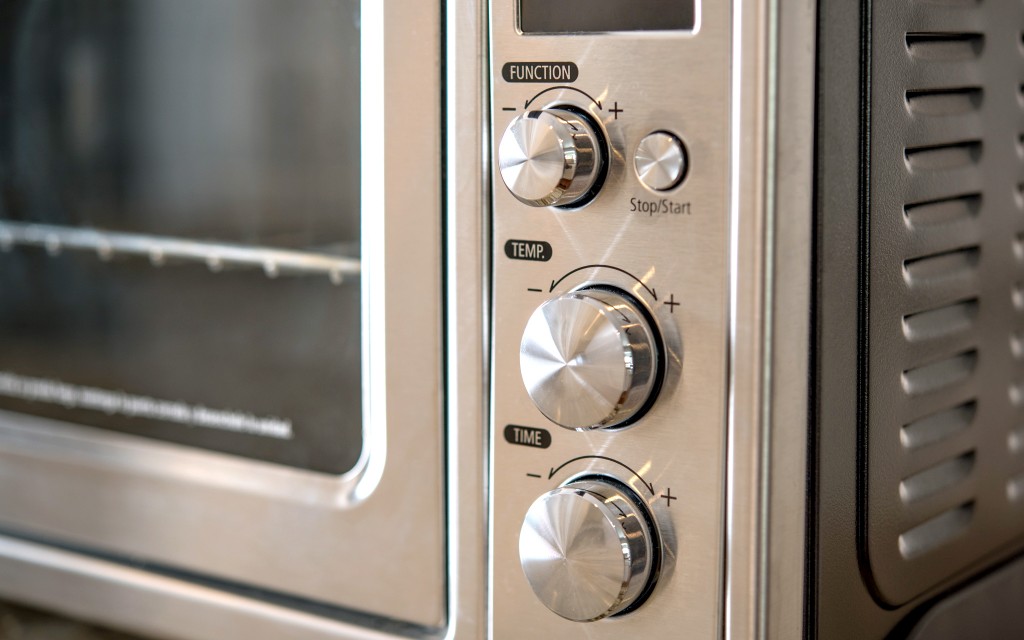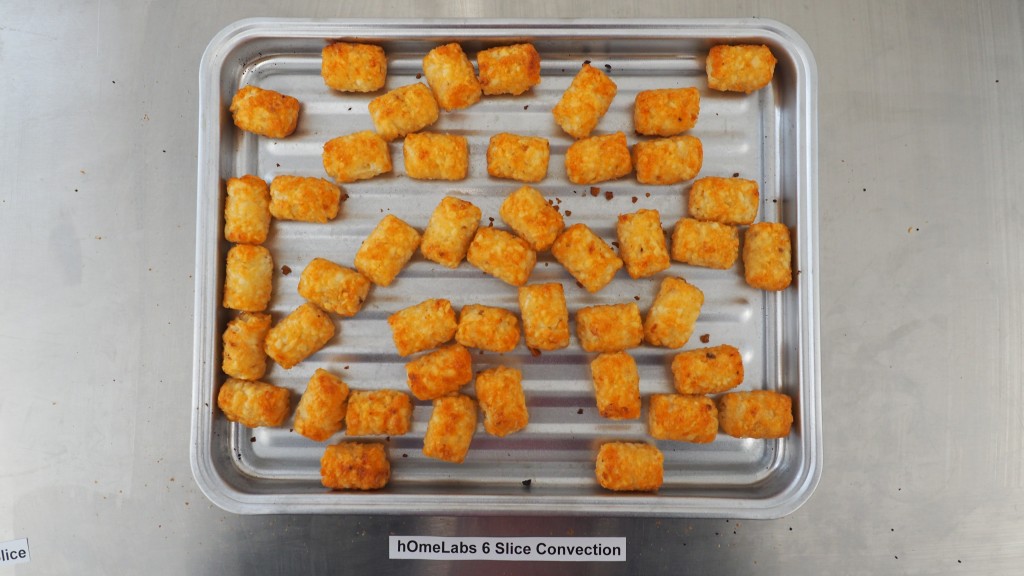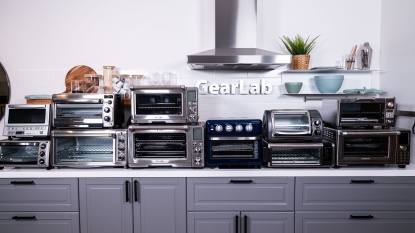hOmeLabs 6 Slice Convection Review
Our Verdict
Our Analysis and Test Results
Performance Comparison
Baking
Earning a 6 out of 10 for its baking, the hOmeLabs was average in this metric though not disappointing. The lack of temperature accuracy made it difficult to follow recipes since it cooked most baked goods faster than expected. The number of cooking settings led us to give it a higher score because of how many different recipes it can cook. We cooked chicken drumsticks, brownies, and cookies to evaluate its baking performance and were mostly pleased with the results. The convection fan seemed effective at ensuring even cooking, which was a feature that is typical of much more expensive models. We preferred the convection mode over the standard baking mode for cooking and found it to improve evenness. The cookies came out drier than we preferred and would have been better if we set a lower temperature.
With convection on, brownies were evenly done in the hOmeLabs, with chewy centers and crunchy tops. Like everything else we cooked in this toaster oven, they were well-done when cooked according to the packaging instructions.
Ease of Use
The hOmeLabs has a decent interface and its digital display was easy to navigate. It also has plenty of cooking features, including 3 rack positions, and 10 cooking settings, which include rotisserie cooking.
Its screen and dials seem like a cheap yet functional imitation of higher-end models. One minor annoyance is that you can only view the currently selected setting, meaning that you must scroll through all ten settings until you have them memorized. Otherwise, the dials are very easy to use and the menus are intuitive.
The crumb tray is flimsy and can only be taken out when the oven is open. This didn't impact cleaning much but wasn't as nice as the sturdier tray of the Breville BOV800XL. The hOmeLabs came with an oven rack, baking pan, broiling rack, and rotisserie fork. Aside from the rotisserie fork, this was the standard for most of the toaster ovens and the accessories didn't stand out.
Temperature Accuracy
We were not very impressed with the temperature accuracy of the hOmeLabs and it only earned a score of a 4 out of 10 in this metric. It typically cooked between 20 to 25 degrees (F) hotter than the temperature that we set it to. This doesn't make a significant difference when accounted for but if you follow recipes verbatim then they will likely come out overcooked. We saw the average temperature accuracy discrepancy become more dramatic at higher temperatures, where the oven was typically 40˚ higher than it was set to. The convection setting was much better than the baking mode for temperature accuracy and seemed to have a better distribution of heat.
Despite its lack of accuracy, the hOmeLabs did heat up very quickly in our temperature tests. Even when set to its maximum temperature of 450˚, it didn't require more than five minutes to preheat. This is a significant advantage that toaster ovens have over larger traditional ovens. If you're in a rush or cooking a smaller meal then it can be annoying to wait more than a few minutes for an oven to get to your recipe's temperature.
The temperature intervals on the hOmeLabs were different from most of the other toaster ovens. Many recipes require an oven temperature that falls somewhere between two uncommon temperatures, such as 310˚ and 330˚. This isn't too much of an issue and we recommend erring on the lower end since the oven is typically hotter than the set temperature.
Frozen Foods
Because it tends to run a bit hot, the hOmeLabs cooked frozen foods much faster than expected and received a 7 out of 10 in this metric. Most of the ovens performed fairly well in our frozen food tests, with even the lowest scoring models earning scores of 5. It would have taken much longer to cook frozen foods in a conventional oven and the hOmeLabs provides a noteworthy advantage in this area.
The frozen pizzas that we cooked came out on the crispier end of the spectrum but was evenly done and would have been perfect if we took it out a bit sooner.
We were impressed that the hOmeLabs cooked tater tots to a perfect crisp. These were noticeably better than what most of the other toaster ovens produced.
Toasting
The hOmeLabs performed well as a toaster for bread and bagels. Though it didn't produce the most evenly toasted bread we were still pleased with how well toast came out when it was centered on the oven rack. It earned a 7 out of 10 for its toasting performance and worked as well as most of the traditional toasters that we tested. Some Amazon users complained that the hOmeLabs doesn't save toast settings between uses. This adds a bit of extra effort but we didn't find it too annoying.
For toasting bagels, we found broiling to be the best setting, with crispy tops and warm, fluffy backs. Using the toast setting also worked well but tended to make the backs of the bagels a bit too crispy. Broiling in a toaster oven is similar to the bagel setting of most traditional toasters, which only toast one side of each bagel half.
Value
Listing at $160, the hOmeLabs impressed us with its varied cooking functions and sleek interface. Its capabilities were similar to those of much more expensive models though they do feel a bit less refined. The hOmeLabs can typically be found for roughly $100 at retailers, making it an even better value option. It is a significant step up from the Black and Decker Countertop Convection Oven, which lists for $100 but has far fewer cooking modes and a much worse interface.
Conclusion
The hOmeLabs is the best budget option if you want a large toaster oven that can perform a variety of cooking functions. It outperformed comparably priced models with features that are typical of much pricier toaster ovens, such as rotisserie and convection. The main drawback of the hOmeLabs is poor temperature accuracy, which can be adjusted for by setting a lower temperature but is still annoying.


